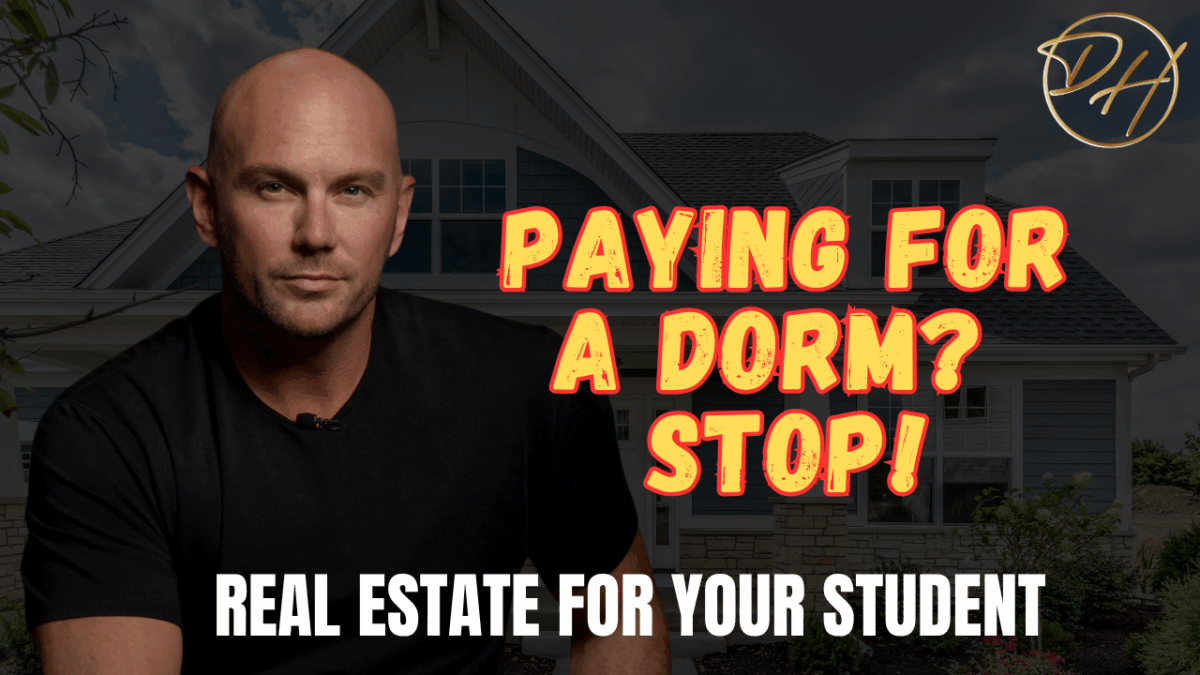
Beating Rising Student Housing Costs with a Family Opportunity Mortgage
“You’re about to spend $60,000 on dorms your kid will hate—when you could’ve bought a house and had the roommates pay the mortgage.”
That’s not just a catchy line. It’s a wake-up call for families navigating the rising cost of college housing.
The Problem: Student Housing Costs Are Out of Control
Did you know the average room and board at a public university is now $12,770 per year? That’s more than most in-state tuition bills—and it’s climbing fast.
For families with college-bound kids, these costs add up quickly. Four years of dorms can run over $50,000–$60,000, with zero return on investment. You’re writing checks that disappear into the void—money you’ll never see again.
But what if those same housing dollars could help build equity in a home instead?
The Solution: The Family Opportunity Mortgage
Enter the Family Opportunity Mortgage—a little-known but powerful loan option offered through Fannie Mae.
It allows you to buy a home for a family member—like a college student or aging parent—and finance it as if it were your own primary residence, even if you won’t live there.
Why It Matters:
Normally, if you try to buy a second property that you don’t plan to live in, the mortgage is treated as an investment property—which means:
- Higher interest rates
- Bigger down payments (20–30%)
- Stricter qualification rules
But with the Family Opportunity Mortgage, you can:
- Put as little as 5% down
- Get low, primary-residence interest rates
- Avoid the strict limits of investment or second-home loans
It’s designed specifically for situations where a family member cannot qualify for a mortgage on their own—typically due to limited income or credit history. Think:
- A college student with no job
- An elderly parent on a fixed income
- A disabled adult child
You, as the buyer, must qualify based on your own income and credit—but you don’t have to live in the home. The family member being assisted must, for at least one year.
Key Program Highlights
Family Opportunity Mortgage Basics:
- Low Down Payment: Just 5% down (vs. 20–30% for investment loans)
- Lower Interest Rates: Treated as a primary residence loan
- Credit Requirements: Usually 620+ FICO, and <45% debt-to-income ratio
- Occupant Rules: Family member must live in the home and be unable to qualify on their own
- No Distance Rule: Property can be near your primary home
This program gives you the best of both worlds: affordable financing terms, without the need for the family member to be on the loan or have strong credit.
Real-Life Example: College Student Housing
Let’s say your daughter is attending State University. Dorm housing and meal plans? Easily $12,000+ a year. Off-campus apartments? Expensive, crowded, and often far from campus.
Now imagine you find a modest two-bedroom condo near campus for $200,000.
With a Family Opportunity Mortgage, you put 5% down ($10,000) and finance the rest. At today’s rates, your monthly payment (including taxes and HOA) might come out to $1,500/month.
Your daughter lives in one bedroom. She rents out the other to a roommate for $750/month. Your effective cost? $750/month—comparable to dorm costs.
But instead of throwing that money away, you’re building equity in a property you own. And after four years, you could:
- Sell the home (possibly at a profit)
- Keep it and rent to other students
- Pass it on to younger siblings heading to the same school
It’s student housing turned investment vehicle.
Real-Life Example: Helping an Aging Parent
Now let’s flip the script.
Your dad lives alone, struggling to afford rent or facing a costly assisted living situation. You want to bring him closer, but housing is tight.
With the Family Opportunity Mortgage, you can buy a small home or condo nearby—only 5% down and a competitive rate—giving your dad a comfortable, independent space.
It’s often cheaper than senior rentals or facilities, and instead of spending thousands a month on rent or care, you’re investing in real estate that stays in the family.
What About Other Options?
❌ Co-signing a Loan:
- Requires your family member (like your kid) to be on the loan and title
- Complicated if they have no income or weak credit
- Ties their financial future to a mortgage early on
❌ Buying as an Investment Property:
- Requires 20–25% down
- Higher rates and stricter underwriting
- Can’t use it as a second home if your child will be the primary occupant
✅ Family Opportunity Mortgage:
- Low down payment
- Lower rates
- Simpler underwriting (you qualify, not them)
- Your loved one benefits—without the financial strain
A Strategic Wealth-Building Tool
This isn’t just about saving money—it’s about building wealth for your family.
Instead of paying rent to dorms or landlords, you:
- Build home equity
- Capture property appreciation
- Retain ownership and control
- Potentially create future passive income
It’s also about creating stability and comfort for the people you care about—whether that’s your child away at school or a parent who needs a safe place to live.
Important Considerations
A few things to keep in mind:
- You’re taking on a second mortgage, so make sure your finances are solid.
- PMI (private mortgage insurance) applies if you put less than 20% down.
- Not all lenders are familiar with this program—work with someone experienced.
Also, it might not be advertised directly as a “Family Opportunity Mortgage”—but if a lender offers Fannie Mae loans, they should know how to structure it once you explain the intent.
Final Thoughts
The Family Opportunity Mortgage is a smart, flexible way to address rising housing costs—while turning family needs into long-term investments.
If you’re facing big dorm bills or worried about an aging parent’s living situation, don’t overlook this tool. It could save you money, build equity, and give your loved ones a better place to live.
If you found this helpful, share it with someone who’s navigating college or caregiving decisions. And if you have questions or want help running the numbers for your scenario, I’m here for you.
Written by Darin Hunter | Mortgage Professional |






